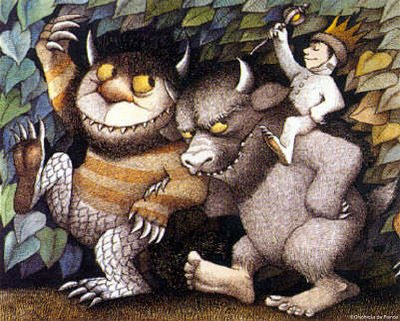Breaking the Rules Uncovers the Shadows
A recent essay in the New York Times Book Review, “Children’s Authors Who Broke the Rules”highlights the fact that three new children’s books published this month were eachwritten by best-selling authors who, in significant ways, broke culturally accepted stylistic norms for children. Yet Shel Silverstein, Maurice Sendak, and Theodor Geisel a.k.a. Dr. Seuss have taken their place among the most read and most beloved of all children’s storytellers.

“They brought a shock of subversion to the genre – defying the notion that children’s books shouldn’t be scary, silly, or sophisticated, “ writes the essayist, Pamela Paul. Each in their own way brought to their writing more candid and explicit depictions of the trials and terrors of childhood. In short, they abandoned the notion that writing for children should be about what’s desired, what’s good, what’s acceptable – and started writing about what IS. Their cleverness and humor is found in the dark and foreboding places as well as the more peculiar and awkward experiences of childhood.
Much of the literature on leadership focuses on what could be or should be rather than what IS. Whether describing desired leadership competencies, or explicating a theory for change management, or singing the praises of successful, even heroic, “leaders,” much attention is devoted to what individuals and organizations aspire to be when it comes to leadership.
Parker Palmer, author and educator, now with the Center for Courage and Renewal, is one of the few writers that has explored the dark side of leadership. In his essay, Leading from Within, he argues that we must “pay special attention to the tendency we have as leaders to project more shadow than light.” The leader who is unwilling to take seriously the “inner journey” avoids confronting the monsters and dragons that need to be slain. They live in all of us, regardless of our age, because we are human. With such avoidance comes the serious risk of inadvertently imposing unintended, and potentially harmful consequences, on those who follow.
Drawing upon the courage of writers like Silverstein, Sendak, and Seuss, we need to be more attentive to how we describe our own leadership as well as those whom we admire. The scary as well as the silly, the awkward as well as the peculiar, the shadows as well as the light, certainly exist in our organizations and communities. We need to learn along with our children how to see with new eyes what’s real in our midst. And laugh more along the way.

Steve, I am a little confused by some of Parker Palmer’s statements.
…”he argues that we must “pay special attention to the tendency we have as leaders to project more shadow than light.” The leader who is unwilling to take seriously the “inner journey” avoids confronting the monsters and dragons that need to be slain.
Help me understand. I have not found that most leaders have a tendency to project more shadow than light. Leaders I think try to shed more light. In your opinion, is the point he’s trying to make is that all leaders have monsters and demons and as leaders they are unaware that they are projecting these shadows/monster and demons?
BTW – all three children’s authors you site are favorites at our house.